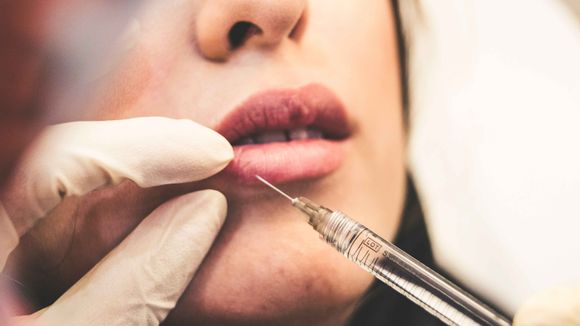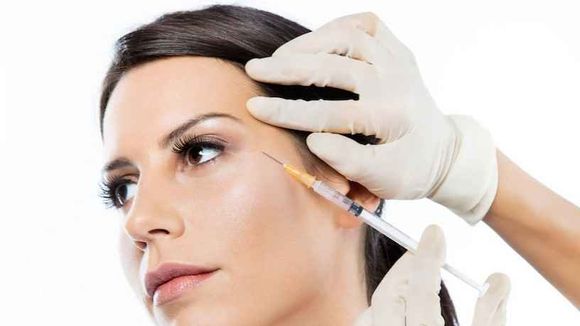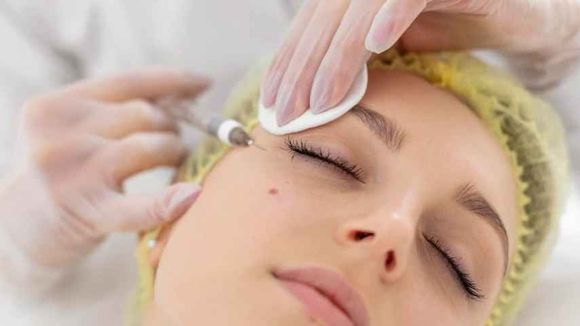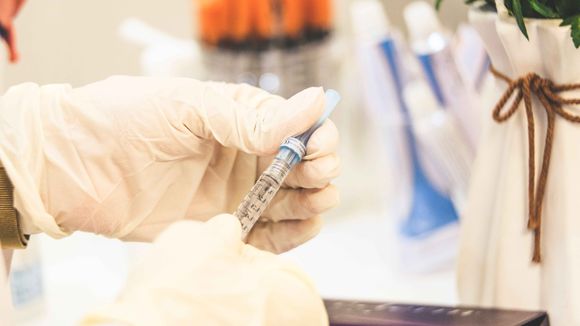What is Botox?
Botox is produced by the bacterium Clostridium botulinum, which causes botulism. Botulinum toxin works by blocking nerve activity in the muscles. Several types of botulinum toxin are known – A, B, C, D, E, F and G – and for medicinal purposes are mainly used type A and very rarely type B.
Botox injections are used to soften mimic wrinkles, prevent chronic migraines, excessive sweating, cervical dystonia, spasticity, certain diseases of the eye muscles and other specific conditions. Botox injections work by relaxing muscles and blocking signals that cause muscles to contract.
What can Botox be used for?

The areas of application of botulinum toxin are not limited to the most popular placement in the upper or lower part of the face. Here are the other conditions Botox can be used for: 1
- Chronic migraine: Botox is used for chronic migraines in patients who have 15 or more headaches per month that last 4 hours a day or more. In migraines, Botox is administered to seven specific areas of the head and neck muscles. The results usually last up to 12 weeks, depending on the individual patient.
- Facial wrinkles: Cosmetic Botox is used to temporarily reduce the appearance of facial wrinkles in adults.
- Cervical dystonia: Botox is used in adults to treat cervical dystonia, a condition that causes the neck muscles to contract abnormally. This causes the neck to twist and the head to tilt to one side, forward or backward.
- Muscle stiffness: Botox is also used to treat muscle stiffness (spasticity) of the arms, legs and feet in adults and children aged at least 2 years. Spasticity is when there is an abnormal increase in muscle tone or stiffness of the muscles, which can cause problems with movement, speech, or can cause discomfort or pain.
- Eye muscle conditions: Botox is used to treat certain eye muscle conditions caused by nervous disorders in adults and children at least 12 years old. This includes uncontrolled blinking or spasm of the eyelids and a condition in which the eyes do not point in the same direction (strabismus).
- Bladder problems: Botox is used in adults to treat overactive bladder and incontinence (leakage of urine) that have not been affected by other medicines. Botox can be used to treat incontinence caused by nerve diseases, such as spinal cord injury or multiple sclerosis.
The 8 Most Important Questions Before Botox
The first consultation is the most important

Like any other procedure, finding a specialist who will make you feel comfortable and answer your questions is crucial before Botox. 2
Specialists examine the capacity of the muscles and feel exactly how the different muscles contract and pull the skin. Each of the muscles of the glabell (between the eyebrows), temple, and around the eyes (crow's feet) are attached to the skin, which is why they cause wrinkles when they contract. Botox injections reduce the ability of muscles to contract completely, thereby reducing/eliminating wrinkles.
You should also have a thorough assessment of the condition before the injection. Some antibiotics, especially in the aminoglycoside category, such as gentamicin, can increase the strength of neurotoxins. Therefore, if you want to be given a Botox injection, make sure you find the right skin specialist who understands the different skin types and applies the best possible treatment.
Botox is a temporary solution
Probably one of the most important questions people have is how long Botox results last. The constructive results of Botox can last up to half a year, when even the procedure can be repeated at the earliest.
The time frame for results depends on many factors, including your digestion, how often you exercise, the severity of damaged skin, and much more. No matter which neurotoxin you try, the results aren't quick and don't last forever. Depending on the amount of neurotoxin infused and how your body processes it, most patients will see that the effect of Botox injection lasts three to four months, after which they need a new injection.
The results are not immediate
Given our culture of instant gratification, we must point out that Botox results are not immediate. Usually, fourteen days after insertion, you will be able to see the full effects of Botox. The time required for a complete Botox result depends on the individual, the area treated, and various other variables. The affected nerves have "binding sites" that allow the chemical to stick to their surface and suppress activity. The more binding sites your nerves contain, the faster the results will begin to show.
Several procedures are needed to insert botulinum toxin
Of course, you can put Botox once and assess whether you are satisfied with the effect of the procedure. But to get long-lasting results, several procedures are needed because Botox is not long-lasting.
The impact disappears and wrinkles may reappear. This is because your nerve cells produce acetylcholine receptors after Botox disappears. These receptors create facial expressions that cause wrinkles. To really remove wrinkles, you need to apply Botox again and again.
Botox is safe with proper operation and placement
Botox is generally considered a safe drug, and it is extremely important to be administered by specialists with the appropriate license. This can minimize the risks of the procedure that may follow.
Be aware of where your Botox injection comes from
Make sure your doctor is the official supplier of each substance to be injected. Allergan, Merz and Galderma are three of the leading producers of neurotoxins and fillers – such as Botox, Vistabel, Bocouture, Xeoxin, Azzalure and Dysport – and Allergan also produces the dissolving fat Kybella.
To reduce the risk of applying an expired, contaminated or potentially dangerous product, some manufacturers' websites offer a zip code search tool to any licensed physician who has received their product legally.
Botox won't remove your wrinkles completely.
Botox is not a magical product, despite the fact that it effectively copes with the symptoms of aging. Because of this, Botox is not a panacea to completely remove your wrinkles. Botox mostly removes certain types of wrinkles, especially wrinkles that form due to facial expressions. These include crow's feet (three wrinkles in the outer corners of the eyes), glabella (wrinkles between the eyebrows) and frontalis (wrinkles on the forehead).
"Static curves" is another term for wrinkles. These wrinkles can appear at any time, even when our skin is flabby. They develop for a variety of reasons, such as hereditary qualities, UV damage, and lack of hydration or collagen. And the last two are characteristic with advancing age.
You Should Avoid Certain Foods and Drinks Before Botox
Most Botox veterans and fillers know that they should stop anticoagulants such as aspirin and ibuprofen before insertion, as these types of medications inhibit blood clotting and increase the risk of bruising if the needle cuts through a blood vessel.
Experts in the field say that fish oil, multivitamins, green tea, cinnamon, ginger and red wine are also contraindicated all week before Botox. Antioxidants, though not all, can increase the fragility of blood vessels and prevent clotting. Therefore, always ask your doctor at least two weeks before Botox treatments what foods, drinks, and medications you should avoid.
Risks of Botox

Botox injections are relatively safe when performed by qualified specialist doctors. Preparations containing botulinum toxin are medications, so they should be administered only by medical professionals with appropriate education and experience. Possible side effects and complications that can occur with improper placement include:
- Pain, swelling or bruising at the injection site
- Headache or flu-like symptoms
- Sagging eyelids or protruding eyebrows
- Crooked smile
- Dry eyes or excessive watery 3
Although it is highly unlikely, it is possible that the toxin in the injection will spread throughout the body. If you notice any of these effects hours to weeks after Botox, contact your doctor immediately and visit a medical center:
- Muscle weakness
- Vision problems
- Trouble speaking or swallowing
- Breathing problems
- Loss of bladder control
Other Important Questions Before You Are Given Botox
You should not be treated with Botox if you are allergic to botulinum toxin or if you have:
- infection in the area where botox will be injected;
- • a current bladder infection or if you cannot urinate and do not routinely use a catheter.
To make sure Botox is safe for you, tell your doctor if you have ever had:
- other injections of botulinum toxin (especially in the last 3-4 months);
- amyotrophic lateral sclerosis;
- myasthenia gravis;
- Lambert-Eaton syndrome;
- side effect after previous use of botulinum toxin;
- respiratory disorder, such as asthma or emphysema;
- problems with swallowing;
- weakness of the facial muscles (drooping eyelids, problems with raising the eyebrows);
- change in the normal appearance of the face;
- problems with bleeding;
- Operation.






